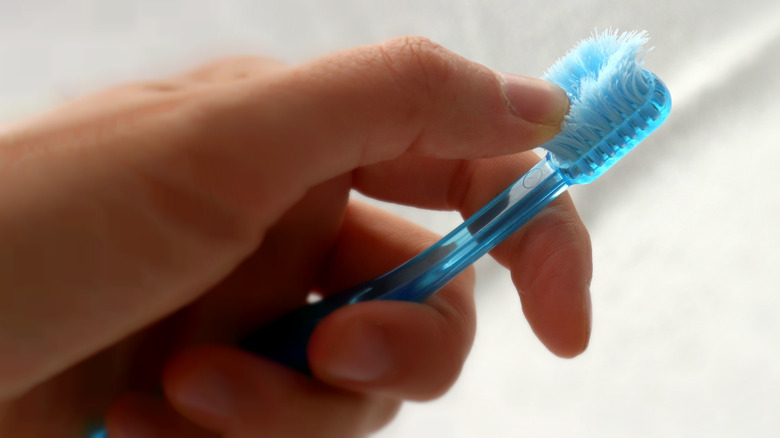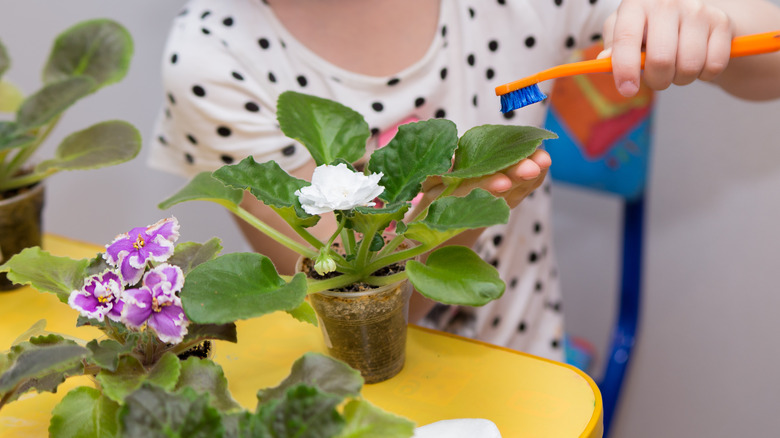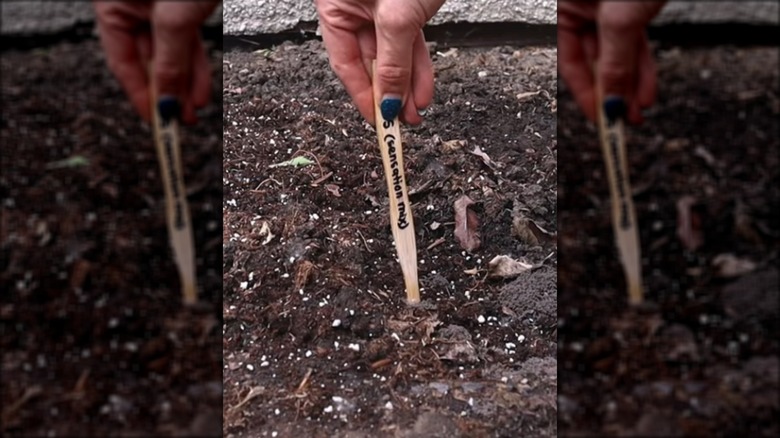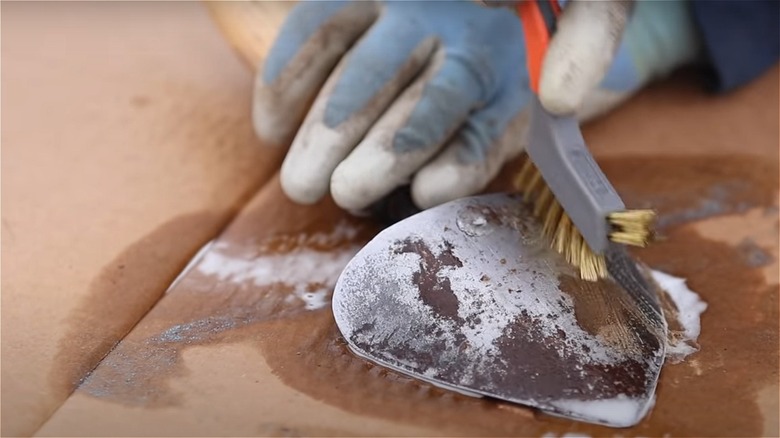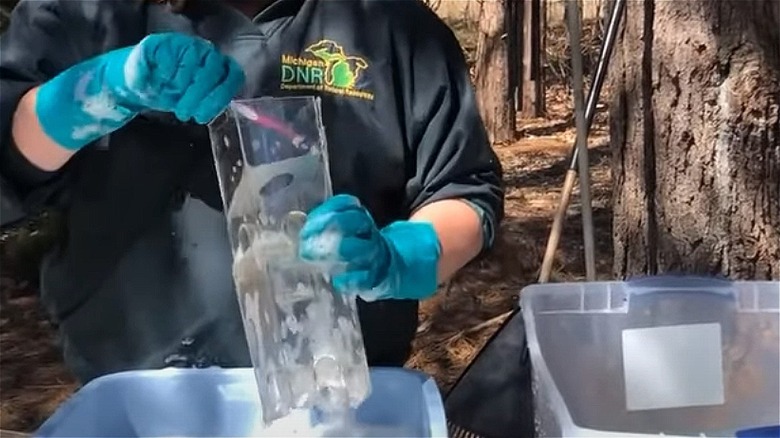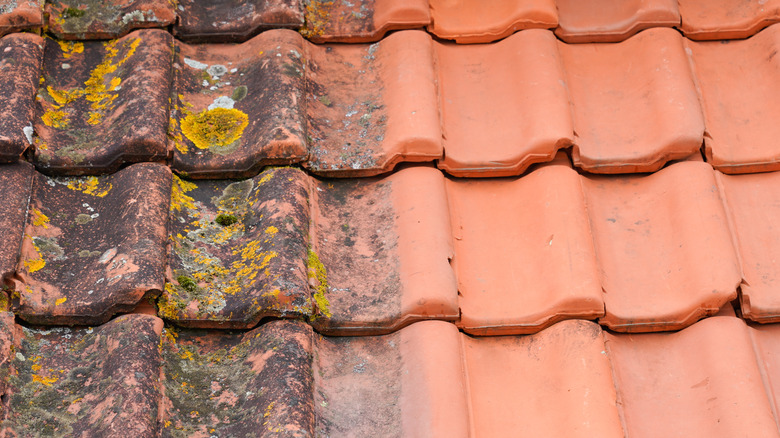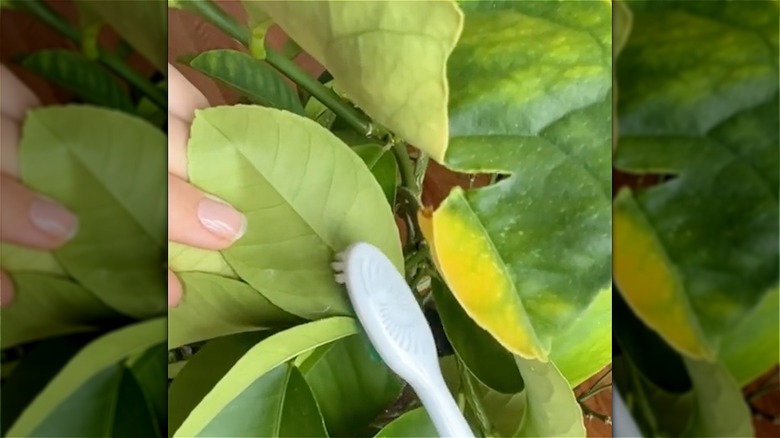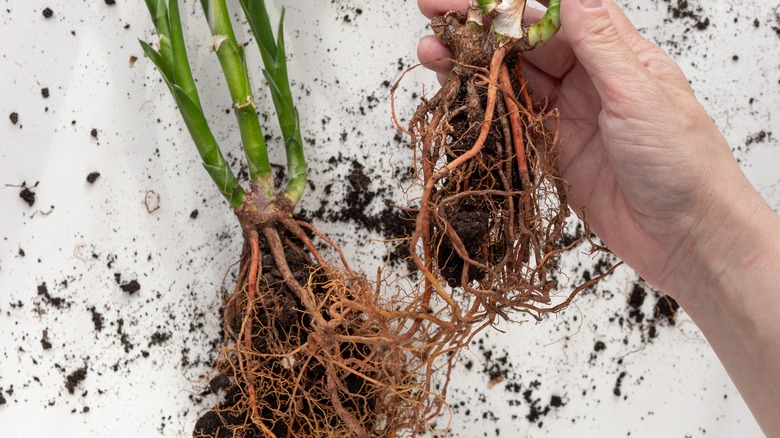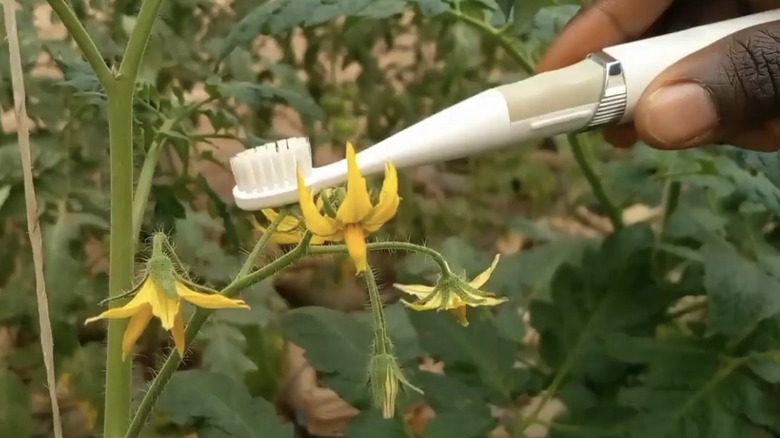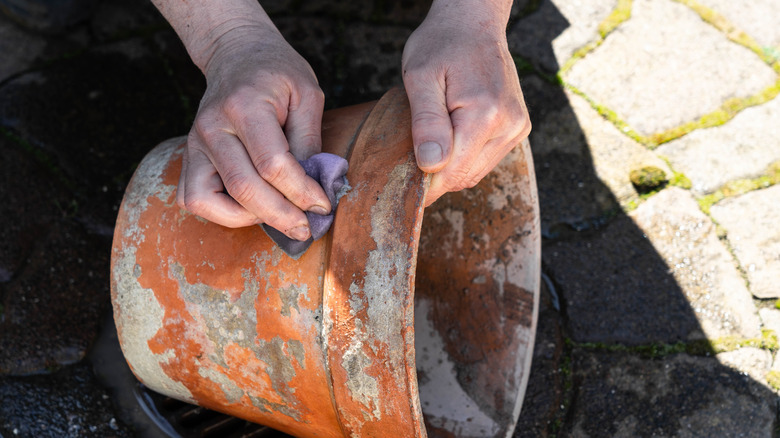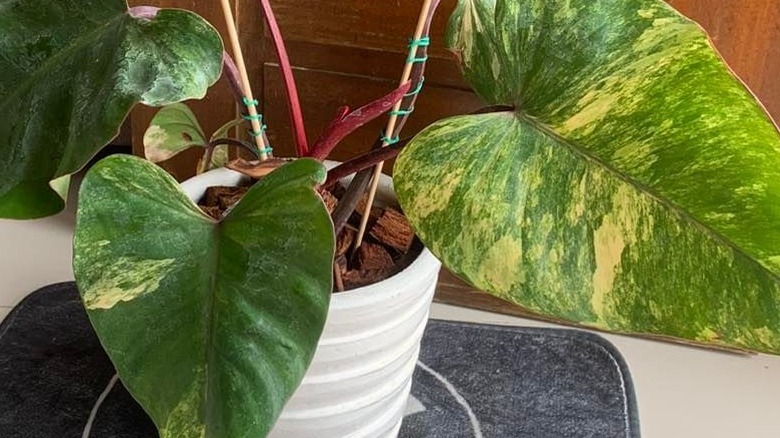Smart Ways To Repurpose An Old Toothbrush In Your Garden
If you're following the CDC's guidelines, you should be replacing your toothbrush at least every 3 to 4 months. You may even need to replace it more often if your bristles start to show signs of wear. That adds up to a lot of toothbrushes in the trash over the course of a year, especially for large families. Toothbrush handles and bristles are typically made out of plastics that end up in landfills en masse. This is a shame not only because it harms our planet but also because, even though they aren't suited for keeping your teeth clean anymore, old toothbrushes have a ton of other possible uses in your garden. We've found 10 of the best ways to repurpose these as cleaning and planting tools in your yard.
However, they first need to be thoroughly cleaned and sanitized. To clean a toothbrush, run it under some hot water and rub it with dish soap, making sure there are no food particles in the bristles. Then you'll need to disinfect it, which you can do by soaking the toothbrush head in white vinegar or hydrogen peroxide (never mix these ingredients together) and hot water, then pouring a kettle full of boiling hot water over it to rinse. Once the versatile tool has been completely cleaned, there are plenty of ways you can use it to benefit your plants or outdoor space.
1. Gently dust fragile plants
Even outdoor plants can gather dust and dirt. This can be detrimental to the health of your plant because it blocks sunlight from coming through, impeding photosynthesis. Cleaning them with your regular full-size duster isn't ideal because it's easy to hit fragile stems and petals and cause damage. Instead, use a small, soft toothbrush to gently remove any dust from the plant. If the leaves have any sticky debris on them, just dip the toothbrush in some water and gently work away at it, being careful not to apply too much pressure or scrub too vigorously.
2. Turn toothbrushes into garden labels
Who needs fancy plant labels or a pack of popsicle sticks for the garden when you have old toothbrushes? For this purpose, if you want the toothbrush to decompose, you can use a bamboo type. This is because the material is biodegradable, unlike plastic brushes, which you'd need to remove at the end of the growing season. Using a pair of pliers, snap the bristles off the brush head, then use a permanent marker to label the brush handle. Next, give the toothbrush a coat of weatherproofing varnish, and once it's dry, place it in your gardening bed or plant pot.
3. Revive gardening tools
It's very easy to throw our garden tools back into the shed without giving them another thought, but keeping them clean is the best way to ensure they work for a long time. However, you probably don't want to waste a perfectly-good kitchen sponge to remove the dirt and grease that these tools accumulate. Instead, spray the tools down with a hose first to clear up any loose dirt, then use a toothbrush and some warm soapy water to give a more detailed clean. The narrow brush head will also be great for getting under screws and other tiny crevices.
4. Clean your bird feeder
Even birds need a clean place to eat! And because bird feeders can attract diseases and bacteria, you need to clean and sanitize them thoroughly, frequently, and precisely. An old toothbrush is a great tool for this. Use a toothbrush to cleanse the bird feeder in a hot and soapy bath, then place the feeder in a disinfecting solution containing bleach and thoroughly rinse it off afterwards. We recommend tossing the old toothbrush out after this because it could easily spread disease if used to clean other surfaces — not to mention the risk of somebody mistaking it for a regular toothbrush.
5. Remove moss and lychen
Moss occurs in damp, shady conditions, often popping up between garden pavers or shed shingles. It's not necessarily harmful to your garden, but it isn't always the nicest to look at. To remove it, spray the moss down with baking soda and water, then allow the moss to dry for a few days. Once it's dry, use a regular scrub brush to remove the large sections, then use a toothbrush to clean the deep crevices and details.
6. Apply insecticidal soap
If you have gnats, powdery mildew, scale, or any other myriad of plant problems, you may need to apply an insecticidal soap. However, before you do so, you can gently remove some of the insects or disease with a toothbrush. You can also use another clean toothbrush to apply the soap to every part of the plant — even the undersides of the leaves. However, because you'll be working on a diseased plant, it's best to throw away the toothbrushes after you use them or disinfect them very well before moving onto the next plant.
7. Separate plant roots
Sometimes you need to repot a plant in entirely-fresh soil. This is especially common if you have root rot or if the root system has been damaged in some way. The problem is that the roots are often very tangled up, and clearing the soil away to see the cause of the issues can cause further damage to the plant. To safely separate roots, remove the plant from the soil and gently shake it to dislodge dirt. Then, use the bristle side of the toothbrush to clear more compact zones. When you've cleared one area, use the other end of the brush to gently detangle the roots.
8. Push pollen to encourage fertilization
Pollination is a necessary step for plants to turn flowers into fruit and is often completed by insects and birds. However, if you want to increase your harvest, you could try out a hand pollination technique. There are expensive electric pollinator tools out there that basically do the same thing an electric toothbrush can do. Just hold the toothbrush up to the flower of the plant and put it on its lowest setting, then gently press it against the petals for a few seconds. The pollen should come down very easily. You can also use a regular old toothbrush, but be sure to very gently tap the petals.
9. Polish up your plant pots
Plant pots need love too, and cleaning them can be good for plant health. A toothbrush is ideal for this task, especially if you notice you have small pockets of mildew or debris on the inside of the pot. Just take a bit of Castille soap and water and use the toothbrush to scrub away at these spots, adding baking soda for extra grit on stuck-on dirt. To treat the mold and mildew, add white distilled vinegar and use the toothbrush to work it in.
10. Support drooping plants
Sometimes, even plants that receive the best care start to droop, which can cause the stem to snap and die off. To prevent this, just use a toothbrush and some twine, zip tie, or floral arrangement tape. Stick the end of the toothbrush into the soil next to the sagging stem or blossom, then use the zip tie, tape, or twine to secure the toothbrush in place. This will keep the stem from falling over. You can also use this hack to train vining plants in your trellis.
